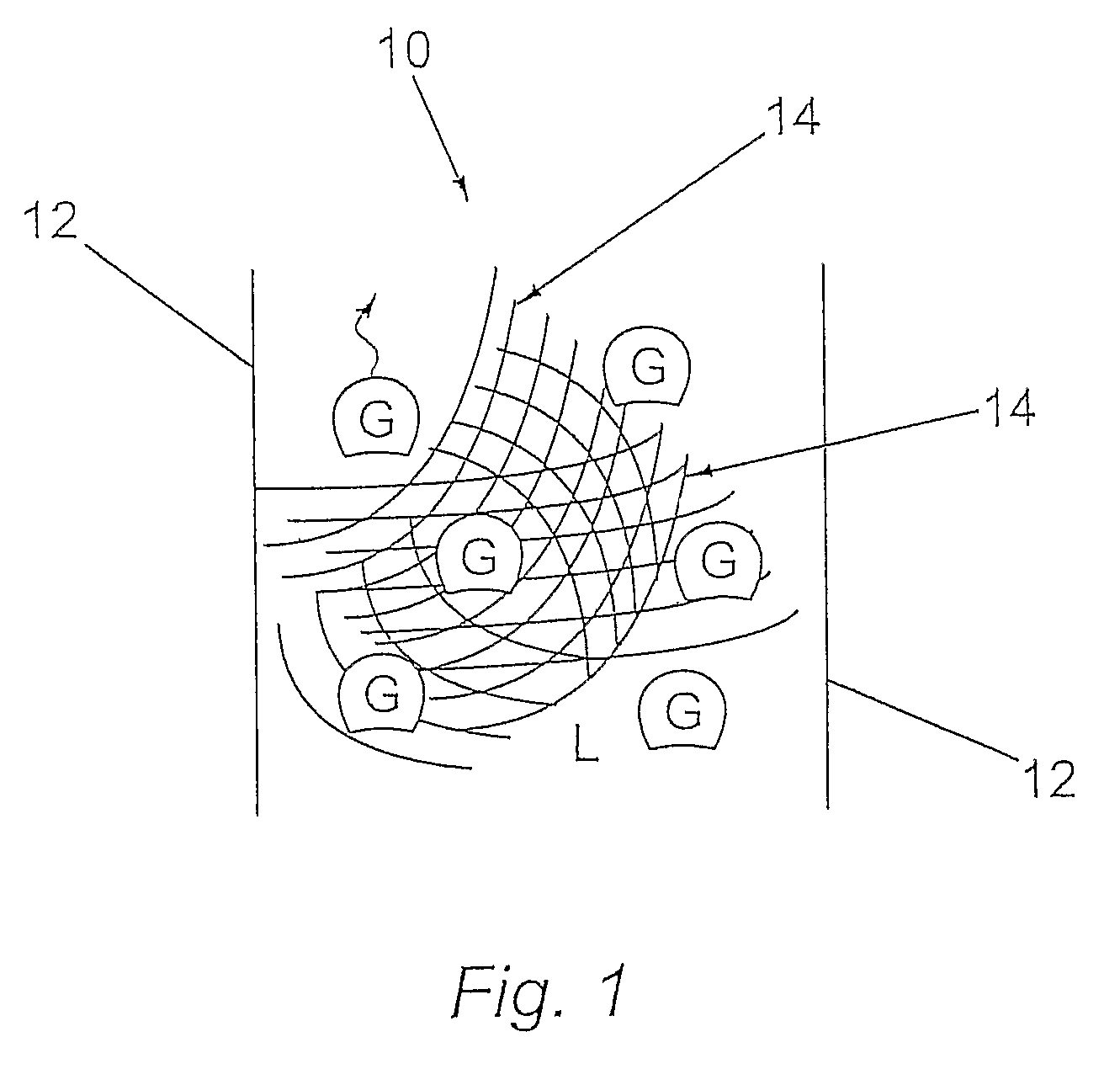Catalyst structure
a technology of catalysts and catalysts, applied in the field of catalyst structures, can solve the problems of increasing radial temperature gradients, limiting commercial viability, and limited heat transfer performance of fixed-bed reactors
- Summary
- Abstract
- Description
- Claims
- Application Information
AI Technical Summary
Problems solved by technology
Method used
Image
Examples
Embodiment Construction
[0019]In a preferred embodiment the catalyst structure comprises one or more one porous catalyst elements fixable within the reactor, each of said porous catalyst elements being at least about 1 cm3, preferably at least about 10 cm3, in size. The maximum size of the catalyst elements may be up till several meters or even more in one or more directions. For instance woven or non-woven metal structures in the shape of large blankets may be used which suitably can be placed between several rows of cooling tubes. Such blankets may have dimensions from 2 to 10 m by 0.5 to 2 m at a thickness of 1-10 cm. The catalyst may also be in the form of rolled up blankets, e.g. cylinders of 2 to 10 m long with a diameter between 10 and 50 cm. One or more cooling tubes may be present in such a cylinder, especially at least one cooling tube in the center of the cylinder. The size usually is between 0.001 m3 and 10 mm3, suitably between 0.01 m3 and 8 m3, preferably between 0.1 and 5 m3.
[0020]It is obse...
PUM
| Property | Measurement | Unit |
|---|---|---|
| volume | aaaaa | aaaaa |
| molar ratio | aaaaa | aaaaa |
| superficial gas velocity | aaaaa | aaaaa |
Abstract
Description
Claims
Application Information
 Login to View More
Login to View More - R&D
- Intellectual Property
- Life Sciences
- Materials
- Tech Scout
- Unparalleled Data Quality
- Higher Quality Content
- 60% Fewer Hallucinations
Browse by: Latest US Patents, China's latest patents, Technical Efficacy Thesaurus, Application Domain, Technology Topic, Popular Technical Reports.
© 2025 PatSnap. All rights reserved.Legal|Privacy policy|Modern Slavery Act Transparency Statement|Sitemap|About US| Contact US: help@patsnap.com

